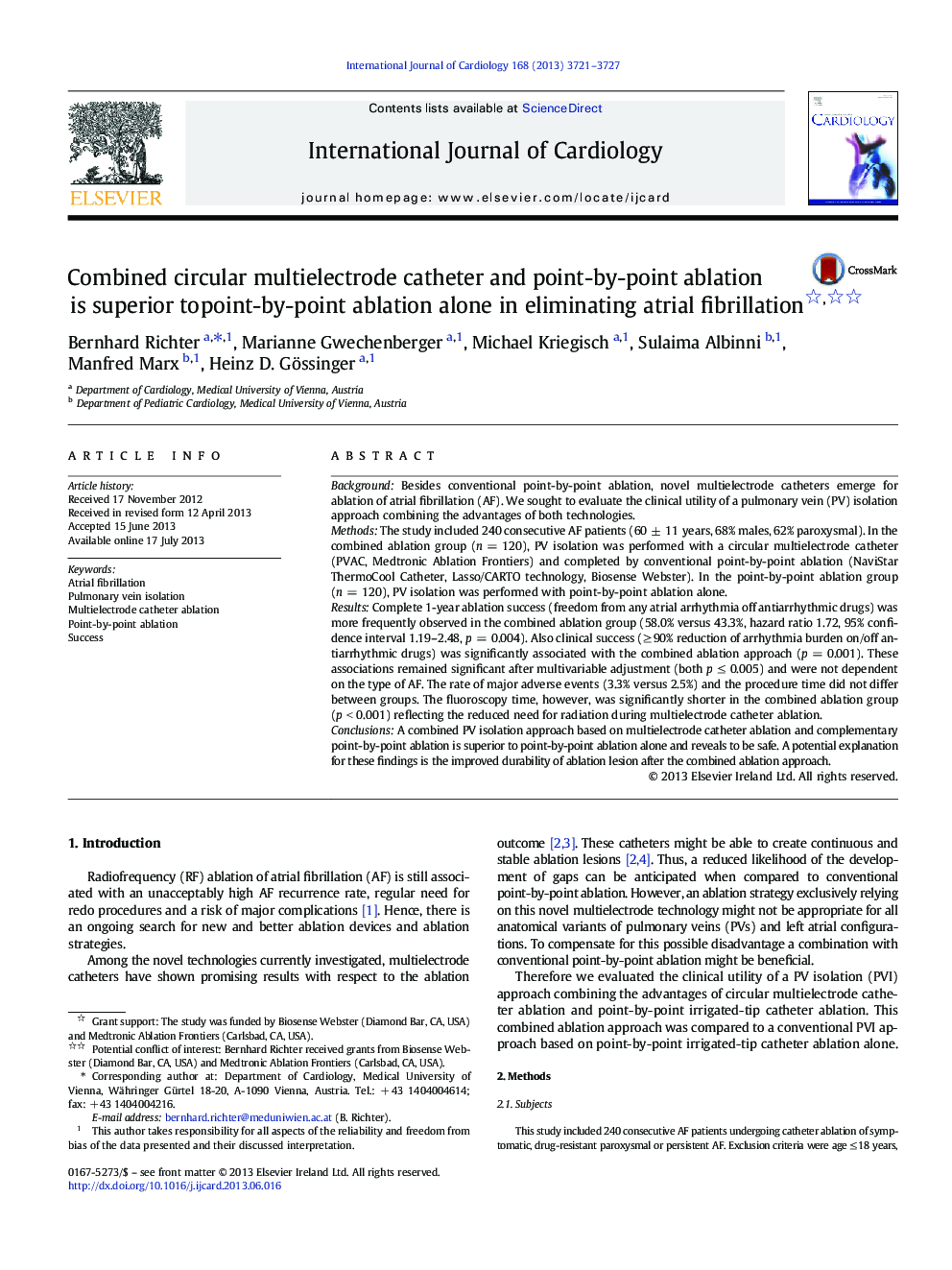| کد مقاله | کد نشریه | سال انتشار | مقاله انگلیسی | نسخه تمام متن |
|---|---|---|---|---|
| 5973863 | 1576208 | 2013 | 7 صفحه PDF | دانلود رایگان |
BackgroundBesides conventional point-by-point ablation, novel multielectrode catheters emerge for ablation of atrial fibrillation (AF). We sought to evaluate the clinical utility of a pulmonary vein (PV) isolation approach combining the advantages of both technologies.MethodsThe study included 240 consecutive AF patients (60 ± 11 years, 68% males, 62% paroxysmal). In the combined ablation group (n = 120), PV isolation was performed with a circular multielectrode catheter (PVAC, Medtronic Ablation Frontiers) and completed by conventional point-by-point ablation (NaviStar ThermoCool Catheter, Lasso/CARTO technology, Biosense Webster). In the point-by-point ablation group (n = 120), PV isolation was performed with point-by-point ablation alone.ResultsComplete 1-year ablation success (freedom from any atrial arrhythmia off antiarrhythmic drugs) was more frequently observed in the combined ablation group (58.0% versus 43.3%, hazard ratio 1.72, 95% confidence interval 1.19-2.48, p = 0.004). Also clinical success (â¥Â 90% reduction of arrhythmia burden on/off antiarrhythmic drugs) was significantly associated with the combined ablation approach (p = 0.001). These associations remained significant after multivariable adjustment (both p â¤Â 0.005) and were not dependent on the type of AF. The rate of major adverse events (3.3% versus 2.5%) and the procedure time did not differ between groups. The fluoroscopy time, however, was significantly shorter in the combined ablation group (p < 0.001) reflecting the reduced need for radiation during multielectrode catheter ablation.ConclusionsA combined PV isolation approach based on multielectrode catheter ablation and complementary point-by-point ablation is superior to point-by-point ablation alone and reveals to be safe. A potential explanation for these findings is the improved durability of ablation lesion after the combined ablation approach.
Journal: International Journal of Cardiology - Volume 168, Issue 4, 9 October 2013, Pages 3721-3727
